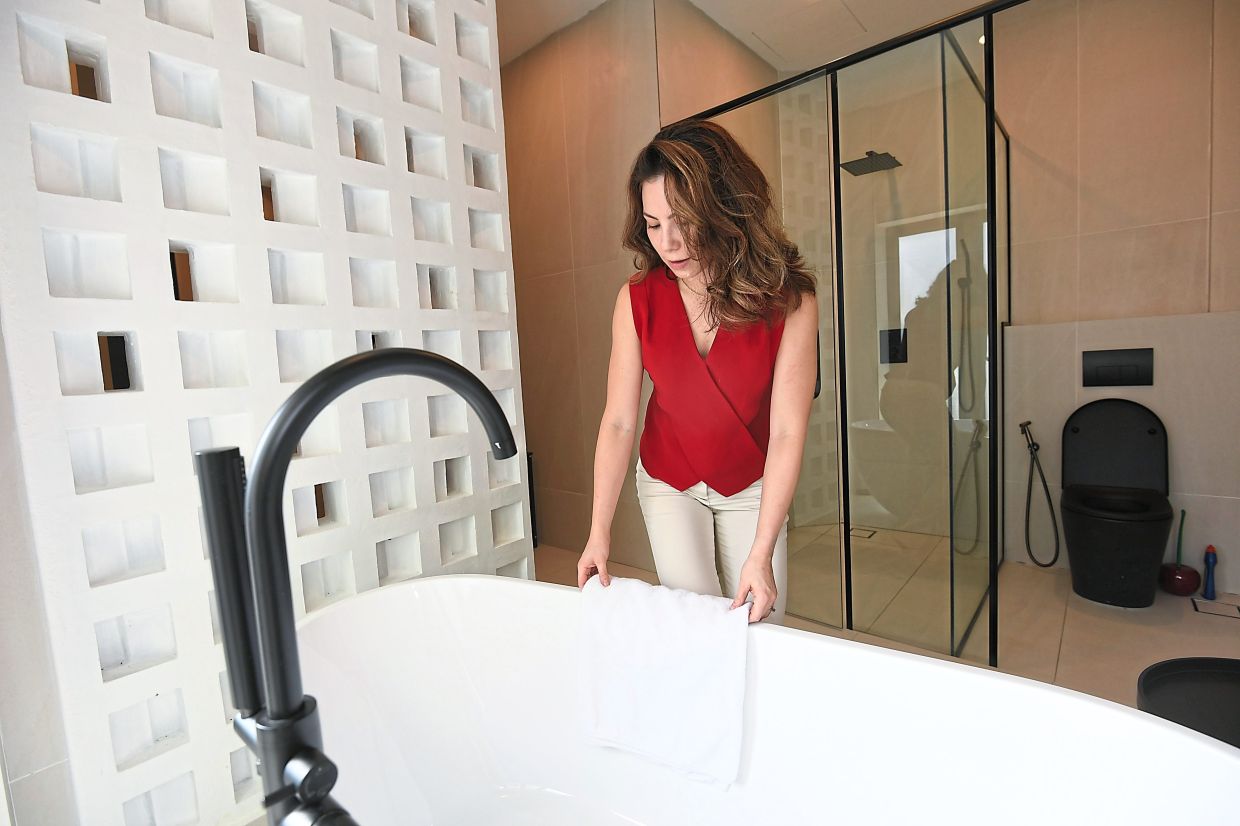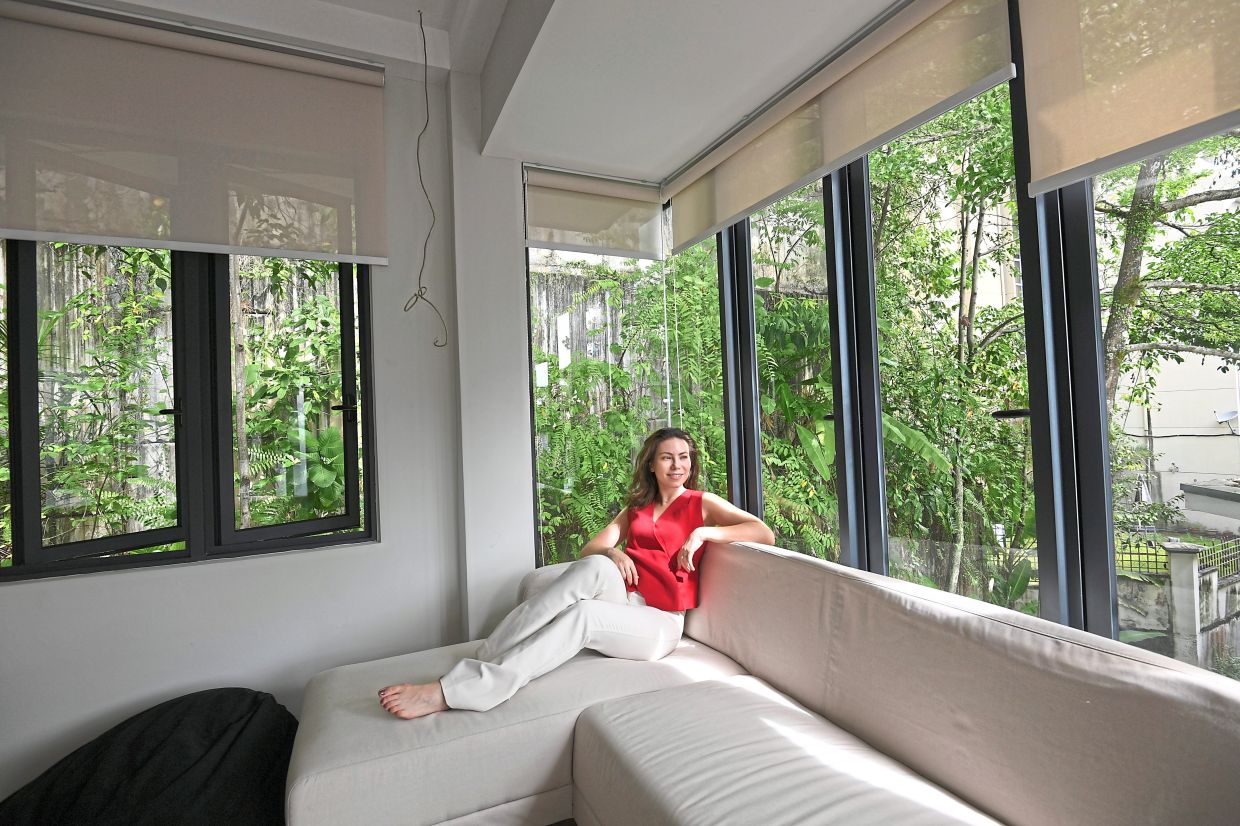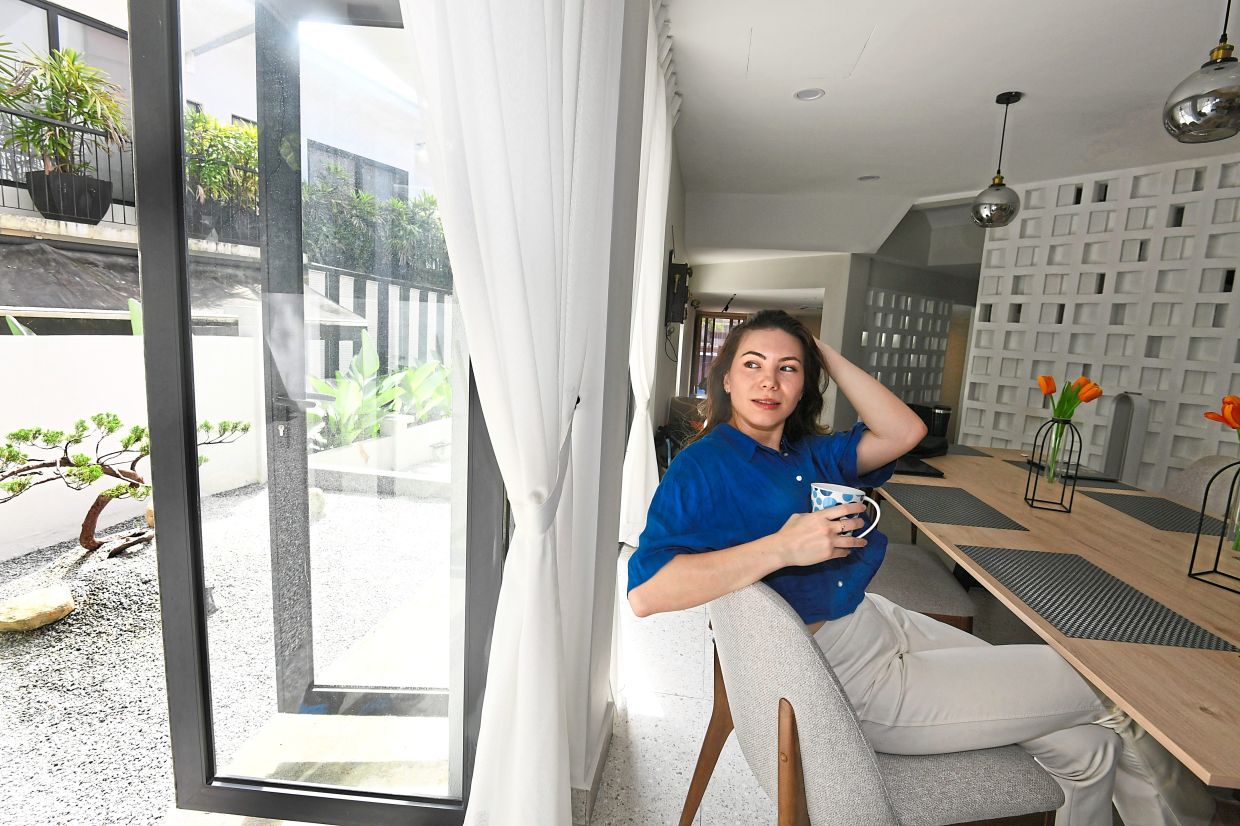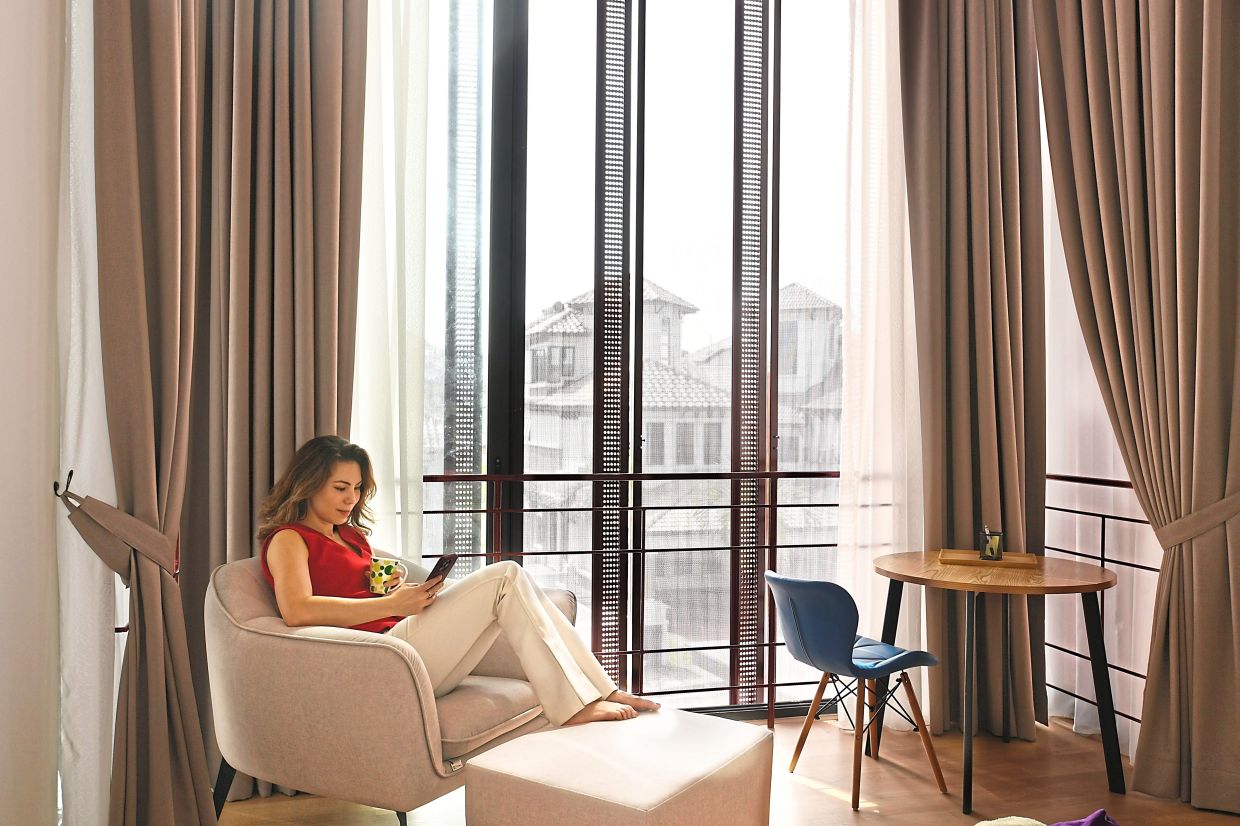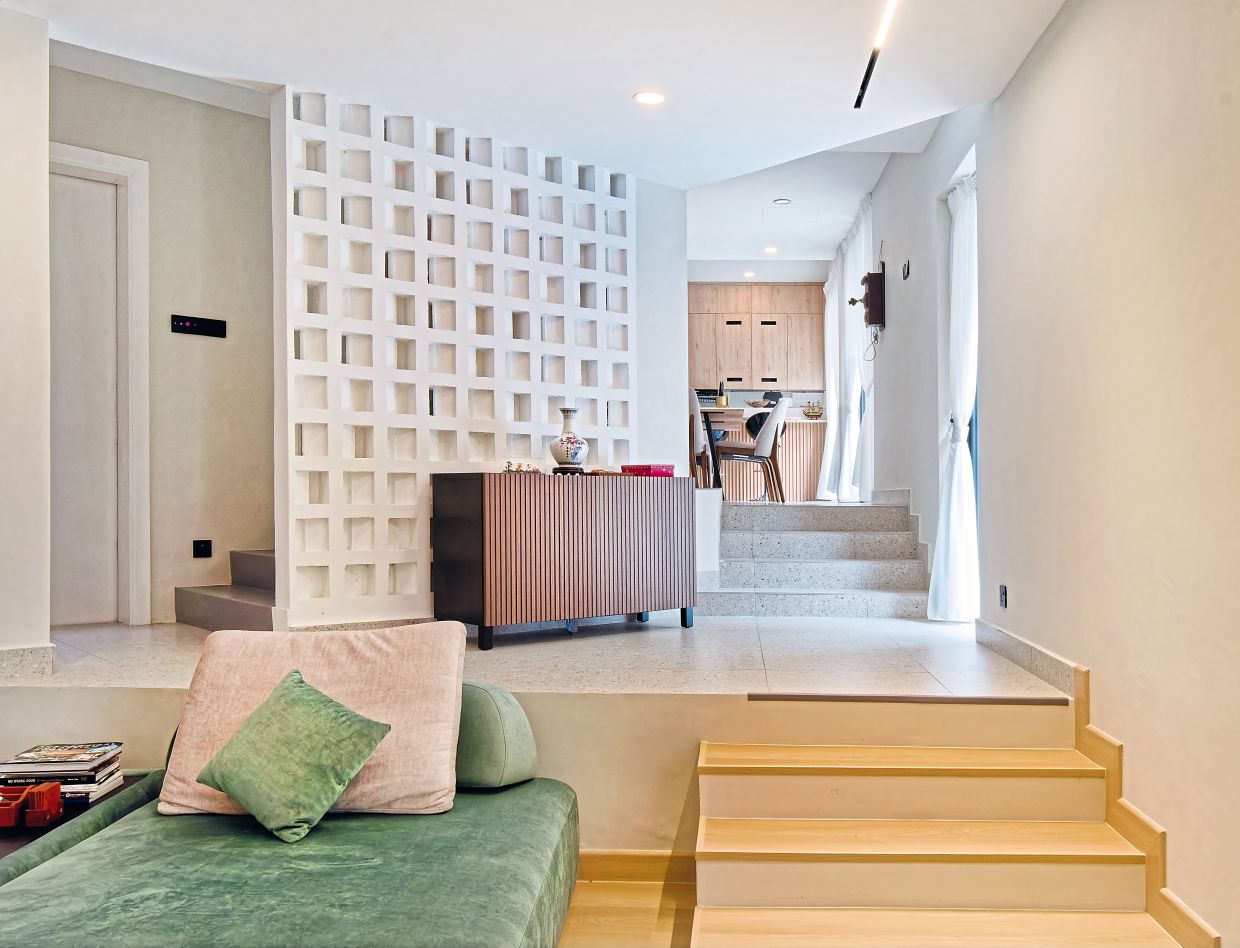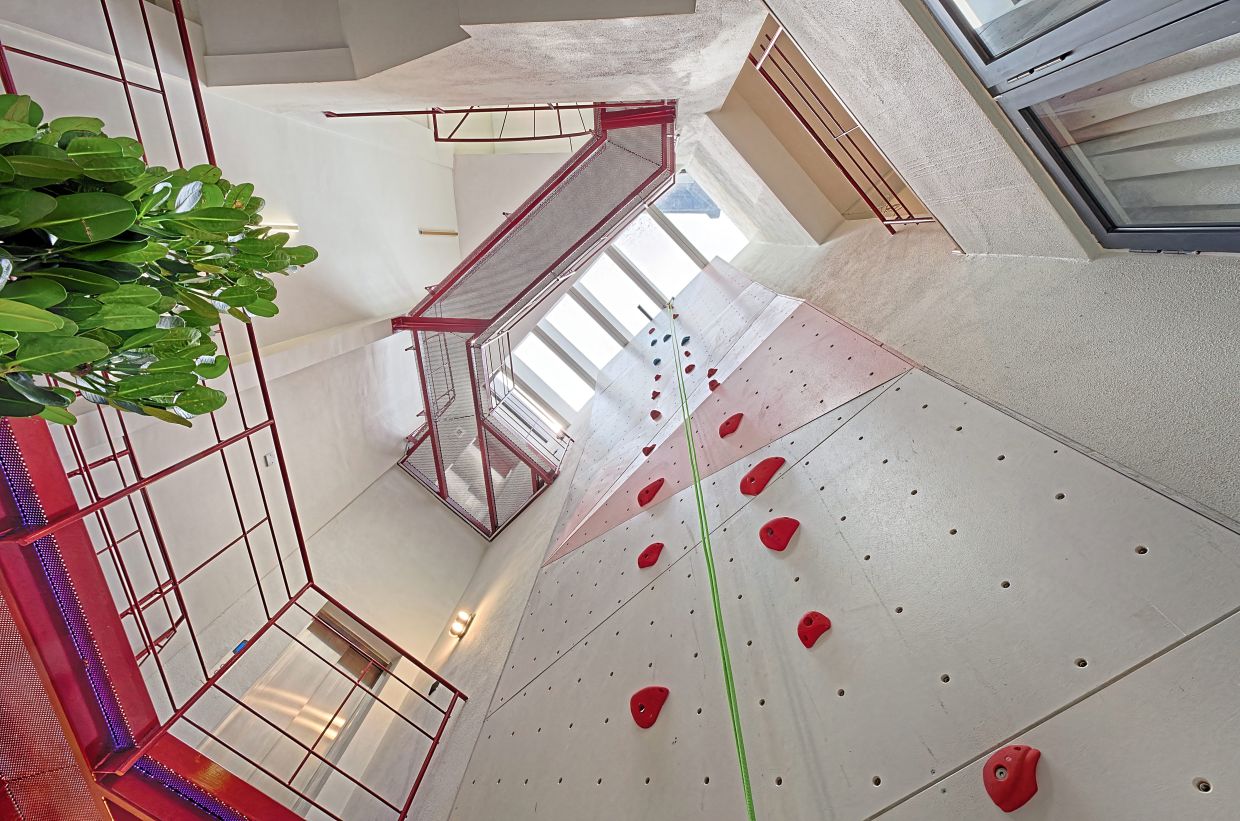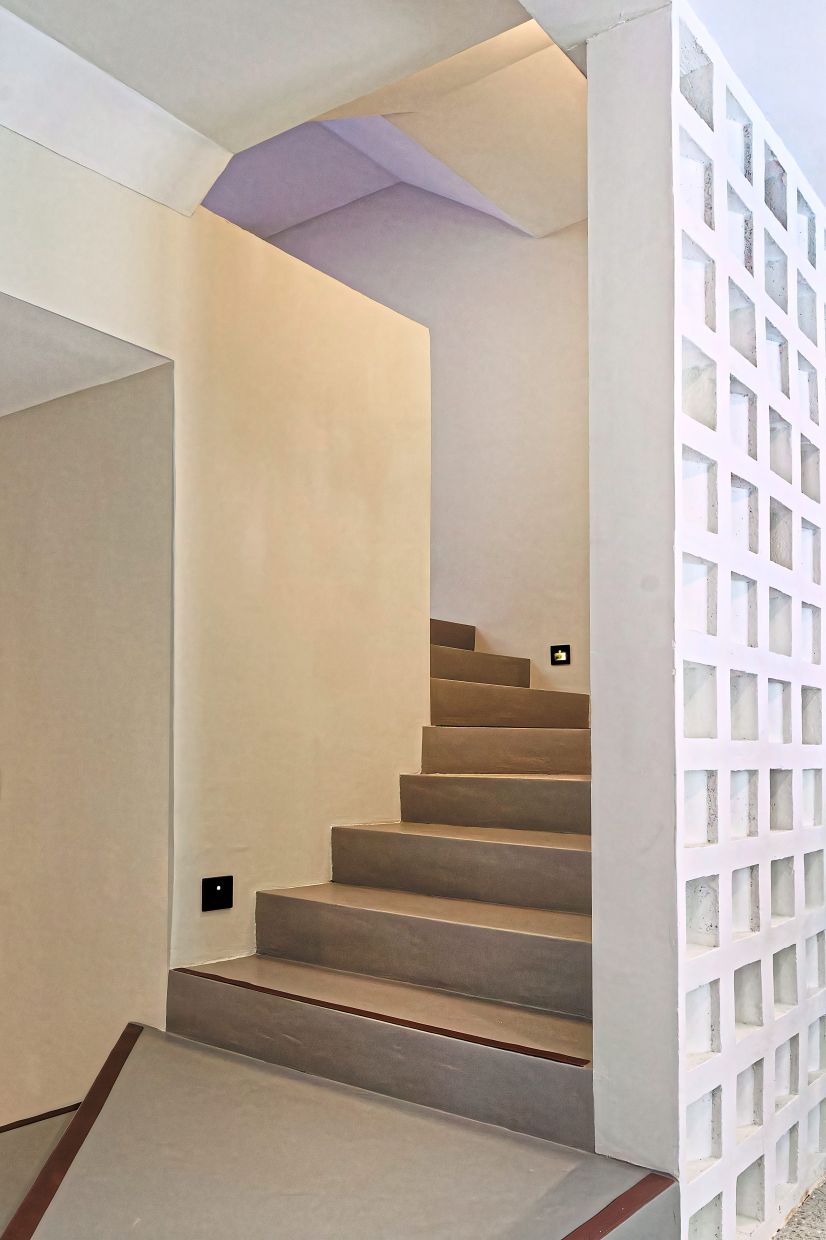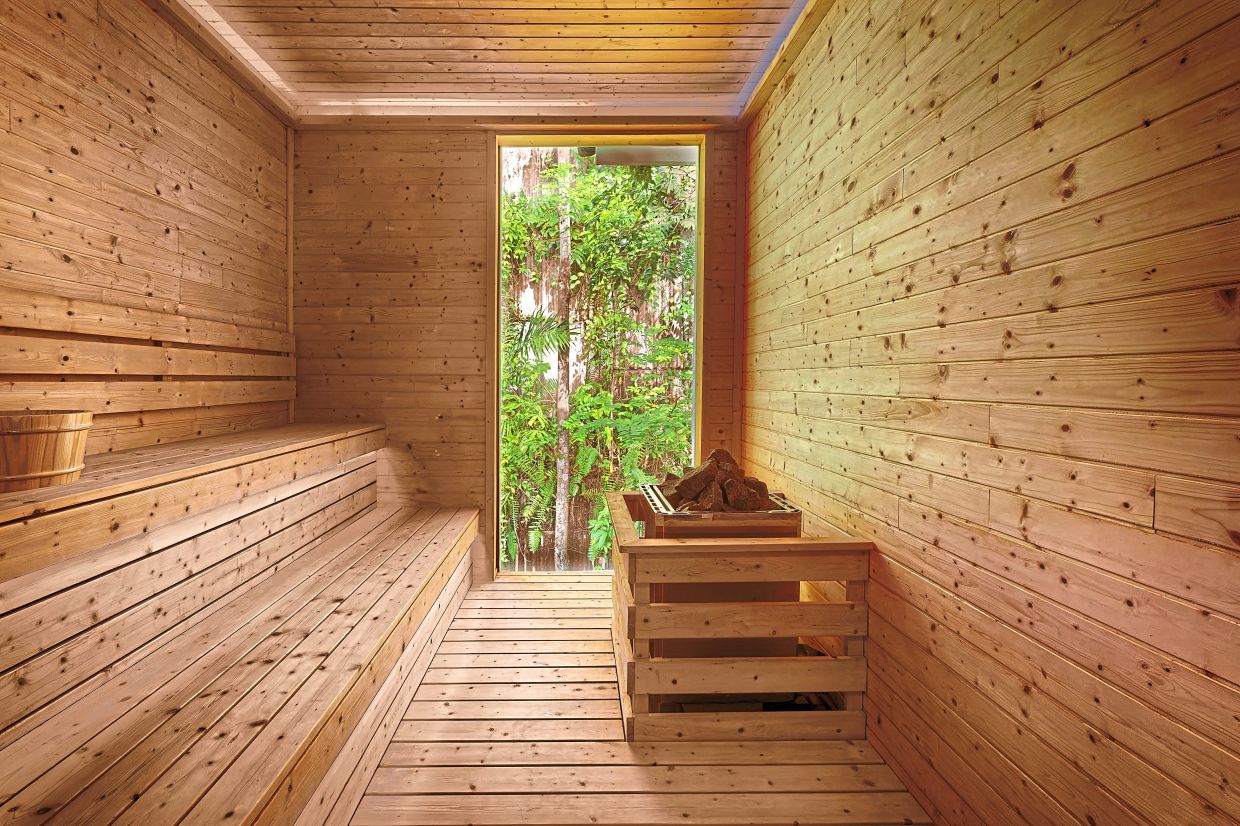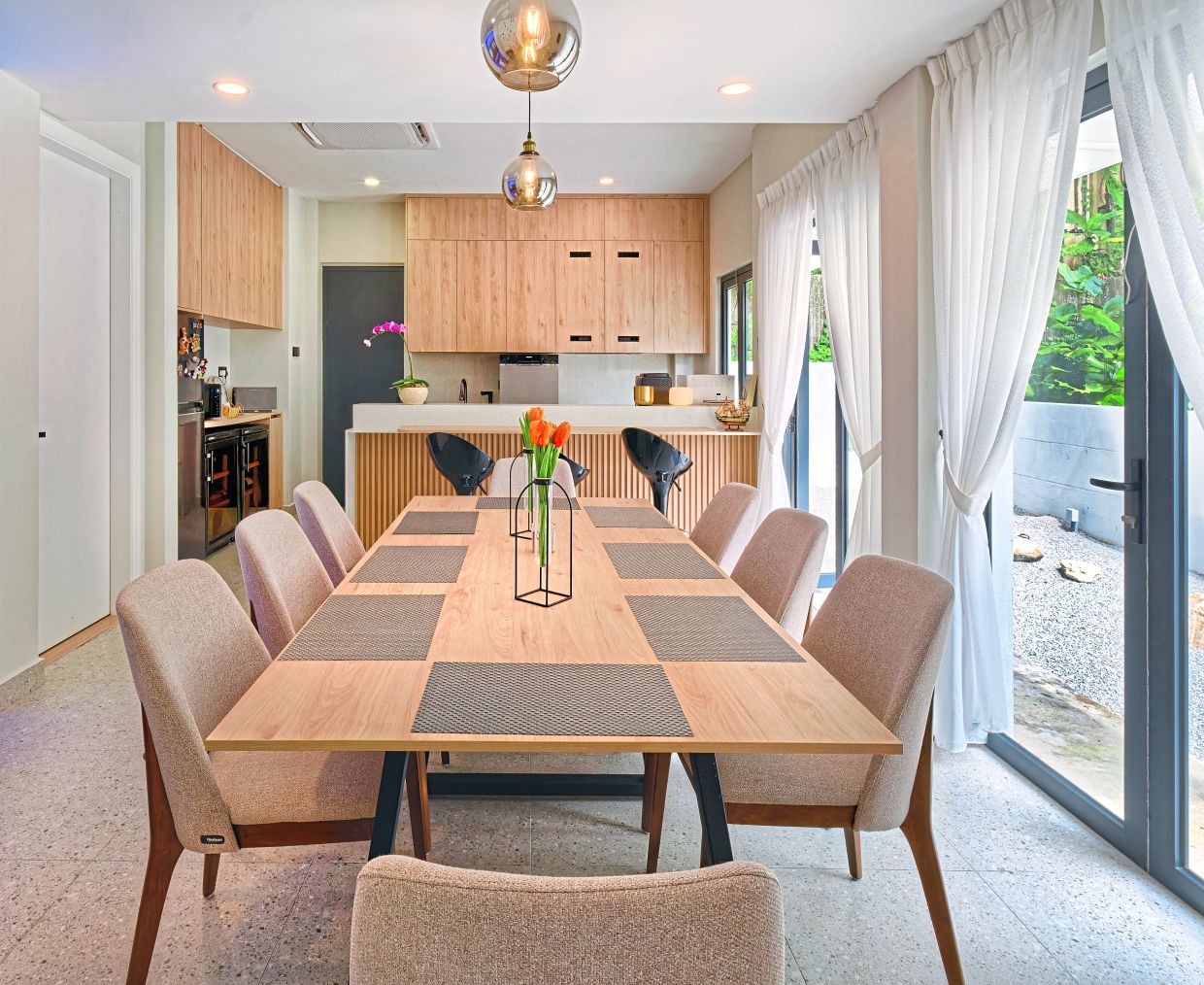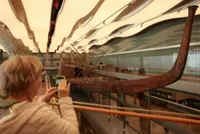The rock-climbing wall – visible from multiple levels – allows family members and guests to engage with one another even without speaking.
A home is more than just a physical space; it is an extension of its owner’s personality, lifestyle and journey.
J House, designed by Malaysian architect Oscar Tan of OTCQ Architects, is the perfect embodiment of this philosophy.
The modern three-storey semi-detached house in Kuala Lumpur has been transformed into a home of visual connections – both horizontally and vertically – where every design element serves a purpose beyond aesthetics.
“Every house tells a story and this house is a reflection of its owner (who wishes to be known as J), a young entrepreneur with a passion for architecture, photography, rock climbing and socialising,” says Tan.
“It’s not just a place to live but a space that actively engages with his lifestyle, evolving as he does.
“From its open-plan design to the integration of a rock-climbing wall, sauna and entertainment areas, J House is a dynamic environment that fosters movement, interaction and personal growth,” he adds.
When J decided to purchase a home, he wasn’t looking for a finished product. Instead, he sought an old house with potential – one that he could shape into something unique and personal.
“It’s like polishing a raw gemstone,” he explains.
This vision led him to work with Tan from the very beginning, even before selecting the house.
Together, they identified a property with a solid structure and an interesting layout, albeit one that presented challenges.
“The original house had a dark, enclosed interior and a central staircase that divided it into four different quadrants.
“Instead of demolishing and rebuilding, we embraced these limitations, using them as a foundation for new, creative solutions,” says J.
The staircase, for example, became a key design feature – celebrated rather than hidden – by integrating it with a steel sculpture that culminates in a flower at the top, symbolising personal growth and transformation.
One of the most striking elements about J House is its seamless integration of spaces.
“While retaining the staircase as a focal point, we opened up the home, letting light into the courtyard through a new skylight,” says Tan.
The new skylight floods the home with natural light, while perforated metal screens allow for ventilation and soften the structure’s appearance. The house now breathes, embracing the surrounding environment while maintaining privacy.
A critical addition to the house is the external lift, designed for accessibility.
“Everyone will grow old one day, and my father is elderly and moves around in a wheelchair,” J shares.
“I wanted to make the home accessible to him.”
The lift – located where the main door once was – is a new extension to the house. It is linked via metal bridges to the different levels of the home, and ties into the overall theme of movement and connection, adds Tan.
Even the outdoor wheelchair ramp serves multiple purposes, doubling as a convenient path for transporting equipment and supplies.
Active lifestyle
J’s home is a testament to his belief that a house should evolve with its owner’s interests and lifestyle.
Designed for movement, the house’s most visually striking feature is its indoor rock-climbing wall.
Unlike a simple bouldering wall which can be easily implemented in homes, this fully functional rock-climbing setup – with an auto-belay system and safety equipment – allows for serious climbing sessions.
“It’s a work in progress,” J says.
“But when it’s complete, it will be as good as any indoor rock-climbing gym.”
The third floor, once a bedroom, has been converted into a vibrant entertainment space opening up to an unexpected jungle backdrop, offering privacy from the neighbourhood.
A two-in-one pool-cum-ping-pong table, a sauna and an outdoor roof terrace, create an environment perfect for hosting friends or unwinding after a long day.
“When I first saw the house, I immediately thought about where I could build an indoor rock-climbing wall. Then came the sauna, the entertainment room and the outdoor terrace.”
Form and function
While J House is bold and contemporary, it remains deeply practical. Given Malaysia’s tropical climate, heat management was a key concern, particularly in the west-facing master bedroom.
“The solution was a double-skin facade made from perforated red metal, a striking yet functional element.
“This feature creates an insulating air gap that reduces heat transfer, keeping the interior cool while allowing for an unobstructed view of the sunset,” says Tan.
The choice of materials reflects both aesthetics and practicality.
The dominant use of metal/steel – particularly in the staircase sculpture, bridges/walkways and screens – adds a contemporary yet minimalist feel.
“Wood isn’t often used in minimalist design, and glass can be difficult to maintain,” he explains.
“Metal/steel, on the other hand, offers flexibility, durability and a strong visual identity.”
Beyond its architectural ingenuity, J House carries a deeper narrative.
The central staircase, unavoidable in daily life, is a metaphor of life’s journey – one that everyone must take, step by step, says Tan.
The metal flower sculpture at the top serves as a reminder that growth and transformation come through movement and perseverance, he adds.
The house’s spatial design also reinforces the theme of connection.
The rock-climbing wall – visible from multiple levels – allows family members and guests to engage with one another even without speaking.
“It’s not just about verbal communication,” Tan explains.
“It’s about visual connections. You know you’re there, I’m here, and we’re together in this space.”
Minimal maintenance
Despite its bold and intricate design, J House is surprisingly low-maintenance – a crucial aspect for J, who travels frequently.
The landscaping, for example, is designed to require minimal upkeep, with an automatic sprinkler system and carefully chosen plants that don’t shed excessive leaves, he says.
The roof terrace, where J enjoys his morning coffee, offers a breathtaking view of the city skyline and serves as a prime spot for watching fireworks on special occasions.
The home’s energy efficiency is also a point of pride.
The stack effect, facilitated by the skylight, naturally cools the house by allowing hot air to rise and escape.
Cross-ventilation from perforated walls further enhances comfort, reducing reliance on mechanical cooling systems, explains Tan.
Far from being a static entity, J House is a living, evolving space that continues to grow with its owner.
“A house shouldn’t be an end product when we hand it over to the client,” says Tan.
“It should be the beginning of a journey, and there should be room to grow and evolve.”
This philosophy is evident in every aspect, from its flexible spaces to its ongoing enhancements, such as the completion of the rock-climbing wall and refinements to the entertainment and living room areas.
J himself embraces this mindset. “I wanted a project house, something I could shape over time.”
This approach has resulted in a home that is deeply personal yet universally inspiring – a space that is both a sanctuary and a stage for life’s ongoing adventures.
A thoughtful design, J House is a reflection of its owner’s values and aspirations.
“It’s not just about walls, floors and ceilings. It is about movement, connection and transformation; an evolving masterpiece that continues to tell its story with every passing day,” concludes Tan.
Home in motion
The rock-climbing wall – visible from multiple levels – allows family members and guests to engage with one another even without speaking.
The Star/Ong Soon Hin
The outdoor roof terrace is the perfect place to enjoy a morning coffee, watch the sunset or catch fireworks on special occasions.
The Star/Ong Soon Hin
A ping-pong table that doubles up as a pool table in the entertainment room offers hours of endless fun.
The Star/Ong Soon Hin
It’s not just about verbal communication. It’s about visual connections. You know you’re there, I’m here, and we’re together in this space, says Tan, the architect for J House.
The Star/Ong Soon Hin
The elegantly-designed bathroom with a luxurious bathtub.
The Star/Ong Soon Hin
The entertainment room reflects the owner's lifestyle and love for socialising.
The Star/Ong Soon Hin
The double-skin facade made from perforated red steel helps keep the house interior cool.
The Star/Ong Soon Hin
The dining area opens out to the Japanese rock garden.
The Star/Ong Soon Hin
The perforated red steel facade helps keep the west-facing master bedroom cool in the afternoon.
The Star/Ong Soon Hin
Much of the original structure of J House is maintained, including its multi-split-level design. Photo: Lin Ho Photography
Lin Ho Photography
The home's most visually striking feature is its indoor rock-climbing wall. Photo: Lin Ho Photography
Lin Ho Photography
The original staircase was maintained and turned into a focal point. Photo: Lin Ho Photography
Lin Ho Photography
Red steel bridges connect the home lift to the different floors. Photo: Lin Ho Photography
Lin Ho Photography
The red metal flower sculpture symbolises personal growth and transformation. Photo: Lin Ho Photography
Lin Ho Photography
The sauna opens up to a jungle backdrop, offering privacy from passers-by. Photo: Lin Ho Photography
Lin Ho Photography
The dining area opens up to the Japanese rock garden. Photo: Lin Ho Photography
Lin Ho Photography










